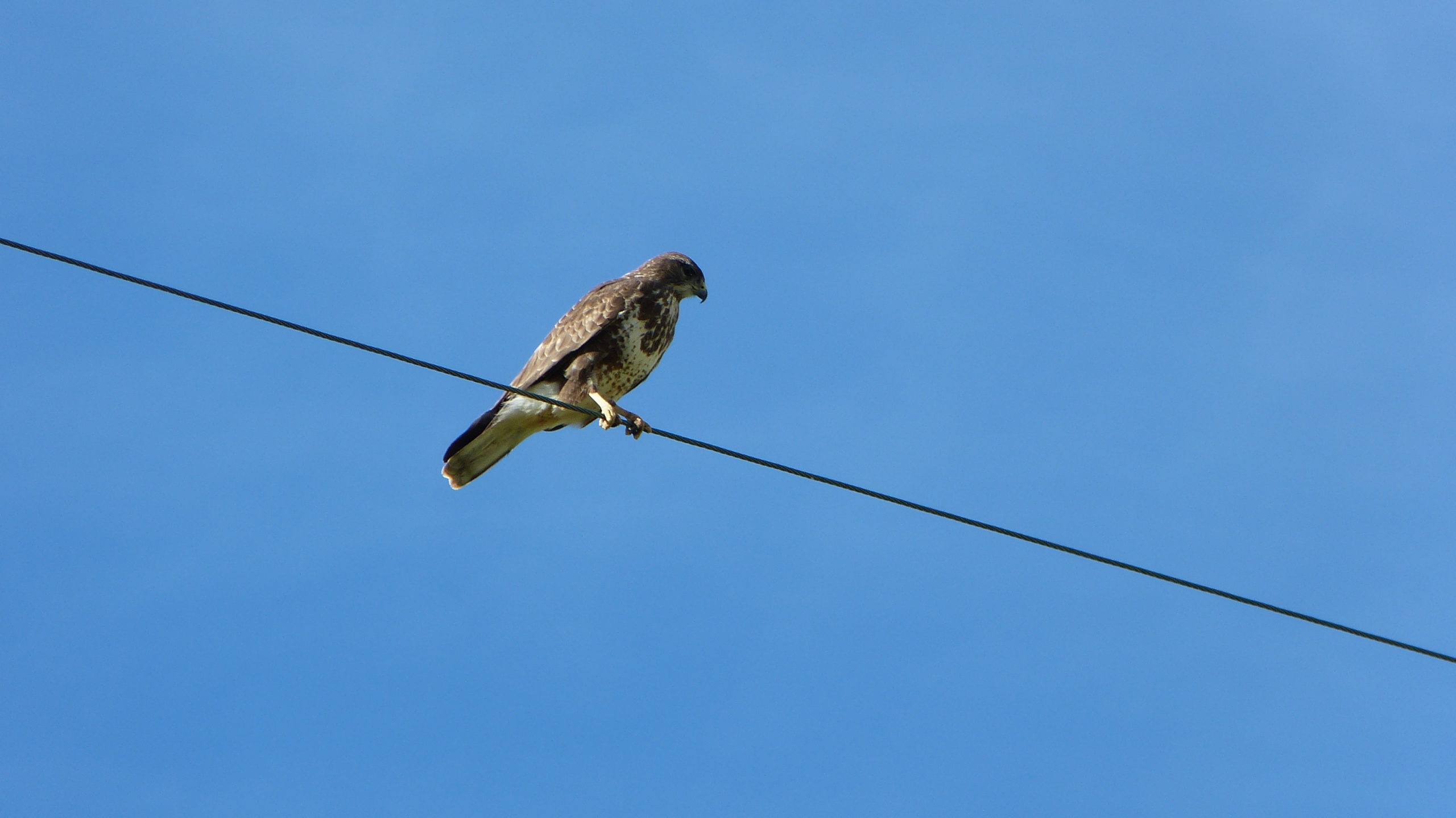By Achilles Dimitropoulos
The Cyclades Were, and still are, the main passage in the migration of birds from and to Africa. Among these birds there always were some rather rare birds of prey as the Sea Eagle (Haliaeetus albicilla), the Imperial Eagle (Aquila heliacal), the Booted Eagle (Hieraaetus pennatus) and various species of falcons as well as all the Harrier (Circus) species, which live in Europe. Even today the Harriers and the Red-footed Falcons (Falco vespertinus) are frequent visitors of Syros, especially in autumn. However, there were few birds of prey that stayed and nested on the Aegean islands, apart from the Peregrine Falcons (Falco peregrinus), the Eleonora’s Falcons (Falco eleonorae) and the Kestrels (Falco tinnunculus) which still nest on Syros, in much reduced populations than those that older hunters tell us or that we are informed from the bibliography.
Searching this particular bibliography, we saw that this was not always the situation. There were big birds of prey on Syros, at least till the middle of the last century. This evidence is proof that there existed on the island the food and environmental conditions which were perfectly appropriate for the permanent presence of these vulnerable birds. Certainly, a great part of the island was rutty and remote, especially the north and south-west part. The existence of natural prey secured the survival of the hunting species but also, occasionally, especially in the winter, they fed on carcasses. These species are the Sea Eagle (Haliaeetus albicilla),and the Golden Eagle (Aquila chrysaetos), the greatest and most impressive of all the eagles of Europe.
It is almost certain that there was some movement of Sea Eagles (Haliaeetus albicilla),above the Cyclades and the islands of East Aegean; birds of this kind have been killed at times in Andros, Tinos, Lesbos, Chios, Samos (where the species probably nested at the coastal forests which were since burnt), Ikaria, Kos, Patmos and Symi. According to I. Choremis, this species nested on Chios till 1960.
Today, there are one or two couples of Sea Eagles (Haliaeetus albicilla)living in all of the Greek territory. The species is under immediate danger of extinction in Europe as well as in the rest of the world. There exist indications that Sea Eagles (Haliaeetus albicilla)nested on Gyaros till the II World War; there are many relevant testimonies of fishermen who saw them feeding on dead seals and dolphins which were washed out on the beach, while the last Sea Eagle (Haliaeetus albicilla)was killed on Gyaros and was stuffed and mounted in Syros by the taxidermist Panagopoulos.
Young Sea Eagles (Haliaeetus albicilla) were observed on Syros on 1981, 1983 and 1985. These birds were traveling and certainly came from far away. It is certain that this species does not exist anymore in the Aegean and it is just passing by the area during migration. The birds that are observed in the Cyclades most probably come from Scandinavia or Russia.
Already, since the middle of the previous century, the populations of Sea Eagles (Haliaeetus albicilla) were reduced significantly and the distribution of the species shrank. The destruction of wetlands and of forests where they nested, the illegal and uncontrolled hunting, the use of poisoned baits for the control of the so called “pest species”, as well as the wide use of pesticides which caused infertility in birds of prey, were decisive factors for the gradual decline of the species, both in Europe and in Asia. In Greece there are no more than one or two couples that reproduce. In the Sporades, the Cyclades and East Aegean, the older fishermen still remember the Sea Eagles (Haliaeetus albicilla) which nested on rocky beaches and uninhabited islands, as is that one south of Chios, where the last bird was seen in 1967.
Testimonies of travelers and explorers prove, often through detailed reports, the existence of Golden Eagles (Aquila chrysaetos) in the Cyclades, especially in Syros but also in Mykonos. Although the Golden Eagle (Aquila chrysaetos)is not as rare as the Sea Eagle (Haliaeetus albicilla) (they exist in the mainland of Greece and Crete) they still are birds of prey who cover great distances for hunting, daily. Thus, its survival on the Cyclades depends directly on the existence of food and most of all on the preservation of the biological balance of expanded areas, free from human intervention. We all know how difficult is to preserve these conditions on our islands when they have undergone touristic and other kinds of developmental activities. A single pair of Golden Eagles was breeding in Syros from 1988 to 2009.
In the classic study of Erhard on the birds of the Cyclades there are various reported testimonies for the existence of Sea Eagles(Haliaeetus albicilla) and the Golden Eagle (Aquila chrysaetos)in Syros. According to this distinguished scientist, an impressive adult eagle who for a long time had been observed living free on the island, was captured and was transferred to the Zoological Garden of Trieste on the care of the ambassador v. Hahn. There, the eagle was deemed a rare acquisition due to “the intelligence she had shown during her taming”. In this same text, Erhard reports how a couple of Golden Eagles(Aquila chrysaetos)has remained on Mykonos, how their nest is situated near the beach, how they fed on stray dogs and cats. This report leads to the conclusion that already at that time, the natural prey of eagles was scarce. An old and possibly sick or exhausted individual, which, from the description, appears to be (Eastern race of) Imperial Eagle (Aquila heliaca)—today, a species on the border of extinction—was found during the migration on the island, and there she died.
Erhard also gives information about the birds of Syros in the scientific journal Naumannia(1856 and 1858), among which reports that in mid-August 1857 two young falcons that had taken from a nest, were brought to him. According his description they should be Eleonora’s Falcons (Falco eleonorae) a species of falcon which still nests on the island. This same period, the explorer discovered a large colony of vultures in Mykonos. Today, there are a few vultures only in Naxos; the nearest to the Cyclades colonies are to be found in Evia.
When the winter was unusually severe, there arrived in Syros—always according to Erhard—Great Bustards, which the locals called “Wild Turkey” (Otis tarda).Today the Great Bustards,large birds, the size of turkeys, are extinct in Greece and they are an endangered species all over the world. Moreover, Erhard made the unique observation of Common Bulbul (Pycnonotus barbatus)in Greek territory. The Common Bulbul (Pycnonotus barbatus)is a dark songbird the size of a Song Thrush (Turdus philomelos) that is encountered in the Middle East and very seldom west of Turkey. The observation of Erhard is of great importance as it does not concern a single individual but a couple which was brought to him, alive from Santorini.
Scientific name of the birds from here.
Translated by Aliki Tsoukala / Edited by Constantine Hatziadoniu

